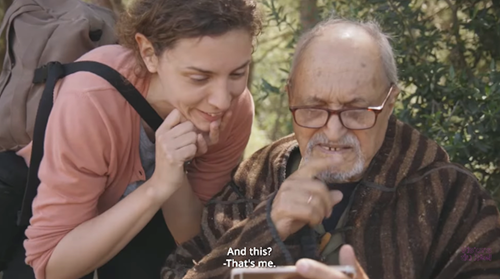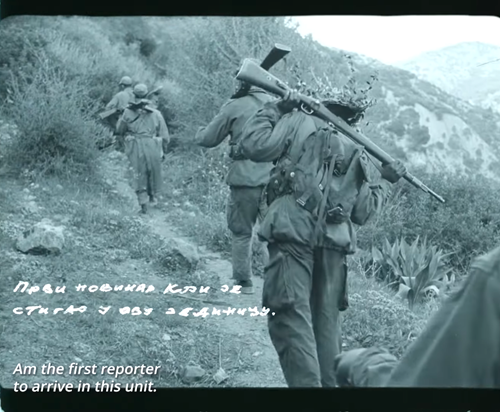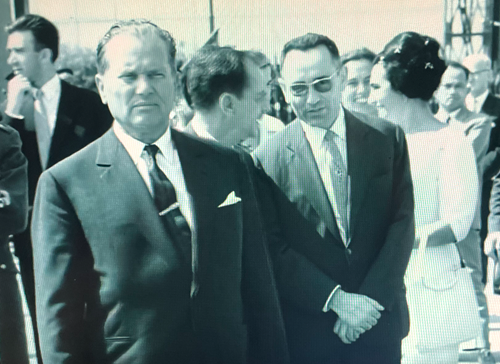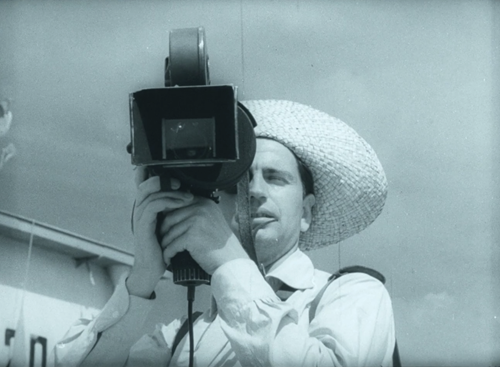By Robert St. Martin
Los Angeles, California (The Hollywood Times) 05/09/2024
The documentary film Non-Aligned was just awarded the Audience Award for Best Documentary Film at this year’s SEEfest Film Festival in Los Angeles. It is a solid portrait of an important photographer Stevan Labudović whose name is largely forgotten but he was one of the first professional war cinematographers. In this film, documentarian Mila Turajlić examines the birth of the Non-Aligned Movement of countries of the Third World during the Cold War via an expansive unexplored archive of Stevan Labudović, the former Tito cameraman for Yugoslavia’s leader Tito in the post-World War II era.

Belgrade-born Mila Turajlić’s Non-Aligned & Ciné-Guerrillas: Scenes from the Labudović Reels straightforwardly portrays the award-winning filmmaker’s latest endeavor as a documentary diptych of two feature-length films that take us on an archival road trip through the birth of the Third World project, based on unseen 35mm materials filmed by Stevan Labudović, the cameraman of Yugoslav President Tito.

But even that ambitious description doesn’t begin to capture the true breadth and scope of this multiyear journey back in time, one which led to the self-described documentary filmmaker and archival archivist who unearthed an anti-colonialist dream that very nearly came true in the 1960s.
These duly recorded on newsreels that are perhaps a wishful hope after World War II. But instead, disintegrated into history, dissolving like celluloid. The filmmaker’s own country of Yugoslavia dissolved slowly after 1989 into fractious independent nation-states. By 2003, the very name of Yugoslavia no longer existed and only Serbia remained.
Labudović and his recordings are the subject of Mila Turajlić’s documentary diptych Scenes from the Labudović Reels, divided into volumes entitled Ciné-Guerrillas and Non- Aligned. In Scenes from the Labudović Reels, the author combines a portrait and archival approach in her own way, adding to all this the motives of the search in order to achieve a better dynamic. She included some interviews with Labudović who was still alive at the time.

During World War II, Stevan Labudović fought with partisans against Nazis, fascists, and local collaborators. After the Second World War; he became the main photographer for Yugoslavian leader Josef Broz Tito, covering his public appearances, speeches, and travels. Stevan Labudović was the first professional cinematographer to provide photographic and cinematographic evidence made while witnessing great historical events such as Tito’s “peace tour” with his famous ship the Galep around the world and the formation of the Non Aligned Movement of Third World nations. Labudović documented all the meetings in Belgrade of the Non-Aligned Nations which were hosted by Tito.

The work of Labudović, along with fellow cameraman Dragan Mitrovic, who, beginning in 1954 and right up until Tito’s death, racked up 56 trips across 55 different countries with the president, survives pretty much intact. And now has been resurrected by Turajlić, who since 2015 has been diving into the archival rabbit hole that is the Belgrade-based Filmske Novosti (literally “filmed news,” aka the “Yugoslav Newsreels”). And perhaps even more surprisingly, though Mitrovic is long gone, Labudović likewise survived pretty much intact, a character in his own right willing to patiently serve as our no-nonsense, clear-eyed guide to the dangerously anti-capitalist Non-Aligned Movement. (Even if Tito’s chief spin doctor, who died at the age of 90 in 2017, doesn’t suffer cinematographic foolishness like dirty lenses, freely chastising his interlocutor for her lack of attention to such details.)

Interestingly, though NAM, a forum consisting of countries not formally aligned with or against any major power bloc, and that was established in Belgrade in 1961 (when for six days, according to Turajlić’s voiceover, her hometown became “the center of the Third World”), was a heterogeneous mover and shaker when it came to decolonization and disarmament, its image-making was almost solely a hegemonic affair. Not only is this treasure trove of mostly African and Asian history in possession of Serbia, but it was overwhelmingly shot (and thus shaped) by Yugoslavs. A fact that the sharp Labudović not only is keenly aware of but doesn’t in the least bit shy away from.

However, it was Labudović’s participation in another war, in another country, on another continent, was the one that earned him the status of a national hero in Algeria, where he is much revered. The third chapter of this documentary is about Algeria and the war that the people of this African country waged for independence from the French colonial empire, and Labudović’s task was of a special kind and given by Tito himself.

The first of Labudović’s duties was to help the anti-colonial struggle by documenting it on film. The second, which arose from it, was the creation of a counterbalance in the propaganda war where the French side also had an advantage besides the economic, military and technical ones, of course), and Labudović was helped in this by figures from the Algerian political elite who, together with him, they “wrote scripts” for propaganda documentaries. Finally, Labudović was not only a cameraman on a pre-prepared “set”, but also an active fighter who shared the good and the bad with the Algerian soldiers.
Ultimately, Labudović was a soldier in a war of images, using his neutral white privilege to set up national film centers across continents, most notably in Algeria, where he spent three years journalistically serving the FLN during that nation’s war of independence. Something that endeared him to the enlightened NATO members, most notably France, about as much as Tito who clearly snubbed Stalin and his Soviet bloc. As a filmmaker, Turajlić herself sums it up in the end, “images of a battle become a battle over images.”





